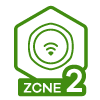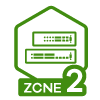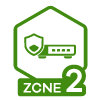Understanding Power Supply and POE Behavior for the WBE660S
 Zyxel Employee
Zyxel Employee



Understanding Power Supply and POE Behavior for the WBE660S
In today's discussion, we'll dive into the crucial aspects of power supply and Power Over Ethernet (POE) behavior specifically tailored for the Zyxel Networks WBE660S device. Understanding these elements is essential for ensuring your device operates efficiently and effectively.
Powering the WBE660S: USB Type-C Requirements
The WBE660S leverages USB Type-C for its power delivery, a method that begins with an initiation phase starting at 5 volts. This initial phase allows the device, in this scenario, the Access Point (AP), to negotiate power requirements with the supplier. If the supplier supports the requested power, it then delivers the necessary power to the device.
It's important to note that the WBE660S does not come with a power adapter included. Customers need to purchase a USB Type-C cable or power adapter separately. When selecting a USB Type-C cable for the WBE660S, two critical factors must be considered:
- Power Requirement: The device requires 45 watts of power, which translates to a need for at least 15 volts and 3 amperes (15V x 3A = 45W). Ensure the cable or power adapter can support more than 45 watts for optimal performance.
- Adapter Specifications: If you opt for a multi-socket USB adapter, verify that its specifications can deliver 45 watts. For instance, some adapters may offer multiple Type-C sockets but not all combinations of these ports will provide the necessary power. Inadequate power delivery from such adapters will prevent the WBE660S from turning on properly.
POE as an Alternative Power Source
Alternatively, the WBE660S can be powered using POE from a compatible switch or POE injector. However, the level of functionality depends on the POE standard provided:
- 802.3bt POE: Full functionality with all four antennas operational.
- 802.3at Standard POE: Partial functionality, with only two of the four antennas operational.
- 802.3af POE: No antenna functionality, but the CPU remains operational, and LAN ports can pass and forward traffic.
A crucial aspect of using POE is the prioritization when both USB Type-C and POE sources are connected simultaneously. The USB Type-C connection takes precedence, meaning even if sufficient POE is available, insufficient power from the USB Type-C will result in the device not operating properly.
LED Indicators for Power Status
The WBE660S is equipped with a single LED on its top panel, serving as an indicator of its power status:
- Red LED near Type-C Socket: Indicates an issue with power delivery, signaling the initiation phase's 5-volt presence.
- Green or Blue LED: Signifies full power mode using 802.3BT POE, with green indicating wireless clients are connected and blue indicating no clients are connected.
- Orange LED: Indicates power delivery is limited to 802.3AP standard.
- Blinking Green LED: Denotes power delivery is limited to 802.3AF standard, affecting only Wi-Fi service functionality.
Understanding these power supply and POE behavior nuances ensures that your Zyxel Networks WBE660S operates efficiently, providing the desired network performance. Whether choosing a USB Type-C cable or a POE method, ensuring proper power delivery is crucial for the device's optimal operation.
Categories
- All Categories
- 439 Beta Program
- 2.9K Nebula
- 208 Nebula Ideas
- 127 Nebula Status and Incidents
- 6.4K Security
- 529 USG FLEX H Series
- 330 Security Ideas
- 1.7K Switch
- 84 Switch Ideas
- 1.3K Wireless
- 50 Wireless Ideas
- 6.9K Consumer Product
- 291 Service & License
- 462 News and Release
- 90 Security Advisories
- 31 Education Center
- 10 [Campaign] Zyxel Network Detective
- 4.6K FAQ
- 34 Documents
- 86 About Community
- 99 Security Highlight

